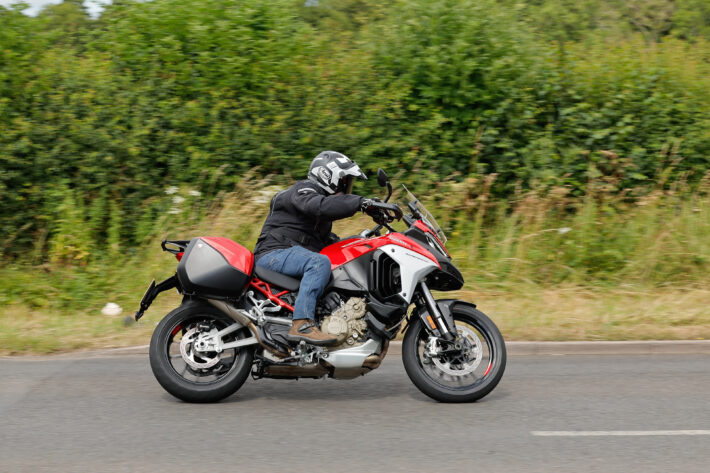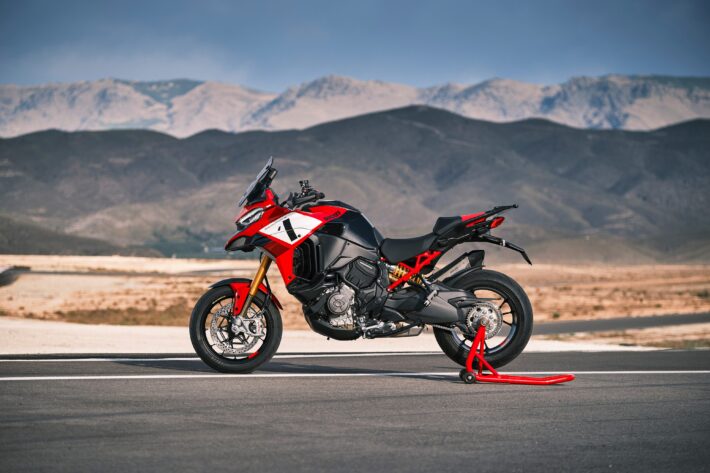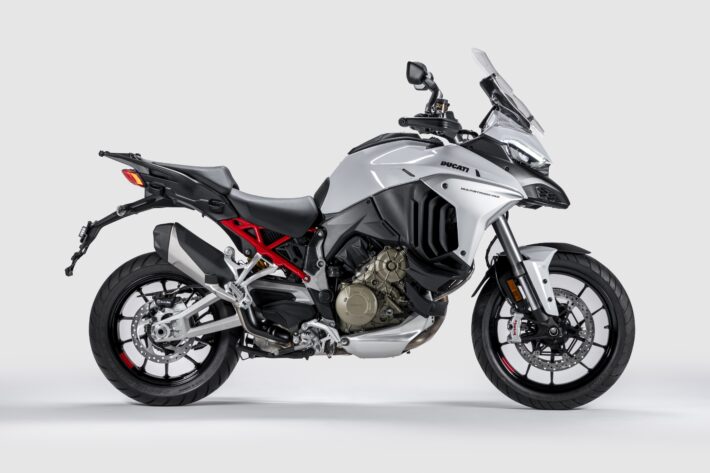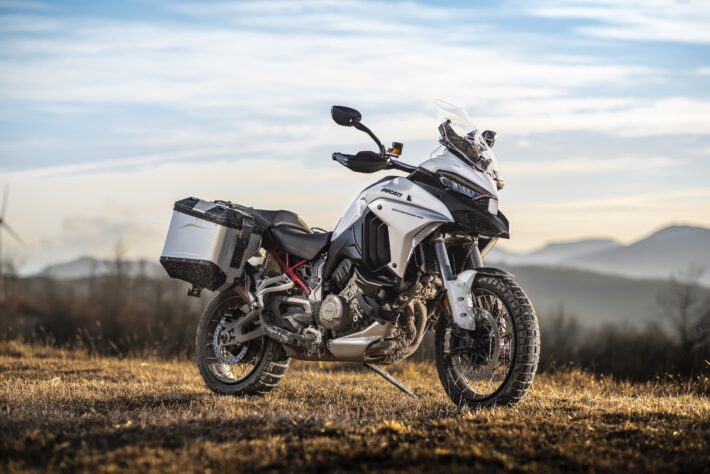Ducati Multistrada V4 S Overview
The Multistrada is Ducati’s entry into the super-popular adventure touring sector, and it’s a model that has gone through some pretty drastic changes during the past 20 years or so. The original Multistrada (Italian for ‘many roads’ of course) was the 1000 DS launched in 2003, with the old air-cooled two-valve desmodromic engine and some questionable styling from then-designer Pierre Terblanche. Fast forward to 2010 and we got the first water-cooled Multistrada, the 1200, using a version of the Panigale V-twin motor. That went through a couple more generations, until the 1260 version in 2018, which was the last hurrah for the big desmo V-twin.

But for 2021, the firm released a massive upgrade, in the form of the Multistrada V4. This took the Panigale V4 desmodromic motor, and transformed it into the Granturismo V4 engine – engineers dropped the desmodromic valve operation, replacing it with conventional valve springs, and also increased the capacity by 55cc to 1,158cc. Peak power dropped to 170bhp from the 210-ish of the Panigale, but the GT engine has a much broader spread of torque and super-long 36,000 mile valve clearance check intervals, thanks to the less-exotic valvetrain.

Away from the engine, there was an all-new chassis, with an aluminium monocoque frame, dual-sided rear swingarm and Brembo Stylema brake calipers. The standard V4 has conventional suspension, with fully adjustable 50mm USD forks and rear monoshock, while the V4S gets electronic semi-active Ducati Skyhook kit.
The chassis is brilliant, offering a great mix of solid road performance and the possibility of off-road antics too (for the brave…), thanks to a 19” front wheel that extends tyre choice. The brakes are strong, the electronic suspension does great work, and the handling easily disguises what is a fairly chunky all-up weight (218kg dry).

It’s the motor that makes the Multistrada though. While the old 1260 V-twin was a beast of a powerplant, it was clear it was at the end of its development cycle, and felt a bit unbalanced at times. It was almost shockingly-strong in the midrange – I watched one crash a Dynojet dyno’s electronics during a run simply from the massive gobbets of torque it was bouncing into the drum.
By comparison, the V4 puts a velvet glove on its iron fist of grunt. It’s smooth, civilised, sophisticated – and genuinely superbike-level fast. Okay, 170bhp sounds light nowadays for a 1,158cc four-cylinder bike motor, but you won’t think that when it’s hurling you towards the horizon. Something about the upright riding position doesn’t quite compute when you experience that drive: it’s a genuinely moving experience, in every sense…

Of course, the Multi V4 has more computers than Elon Musk, and provides a capacious safety net to help cope with this stunning power. Wheelie control, traction control, cornering ABS, riding modes, quickshifter, all controlled via a massive 6.5” colour dash. Add in stuff like smart headlights, Bluetooth link, cruise control, backlit switchgear and optional radar-controlled active cruise control, and you really do get a lot of kit to make life easy on longer runs. You’re more than set for proper tours as well: the V4 is a comfy place to sit for tankfuls of fuel, and there’s ample scope for luggage and pillion accommodation.
You pay for it though. The basic bike costs from £17k, but who could resist the allure of the S model – which starts at £20,500 (prices from summer 2023)? Want more? Then the more dirt-oriented Multistrada 1200 Rally is priced from £23,590. Meanwhile the 4kg lighter Pikes Peak edition with its 17” front wheel, single-sided swingarm, Öhlins suspension and posher chassis kit will set you back £26,595.